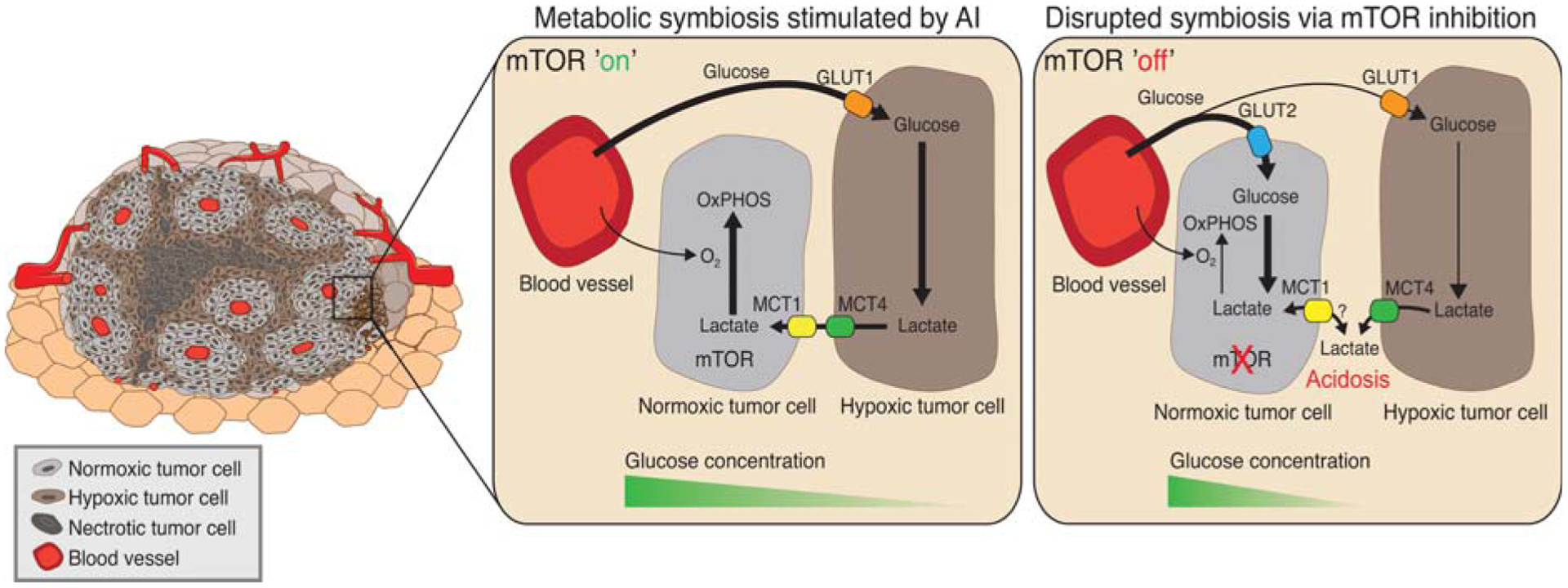Figure 2.

Schematic representation of angiogenesis inhibitor (AI)-induced metabolic symbiosis and the effect of mammalian target of rapamycin (mTOR) inhibition. (Left) Treatment with an AI causes vascular collapse to produce normoxic, hypoxic, and necrotic regions, based on their proximity to functional blood vessels. (Middle, mTOR”on.”) Tumor cells in hypoxic regions up-regulate expression of the glucose transporter GLUT1, increase glycolysis, and export lactate via MCT4. In parallel, mTOR-expressing normoxic tumor cells spare glucose and import lactate via MCT1 to fuel O2-dependent oxidative phosphorylation (OxPHOs). (Right, mTOR”off”) Disruption of symbiosis via mTOR inhibition disrupts lactate catabolism in normoxic cells, which can produce increased intracellular lactate concentrations, reduced extracellular lactate clearance, and increased acidosis. Furthermore, mTOR inhibition up-regulates GLUT2 expression in normoxic cells, which can increase glucose consumption by the normoxic cells to reduce its availability for the hypoxic compartment.
